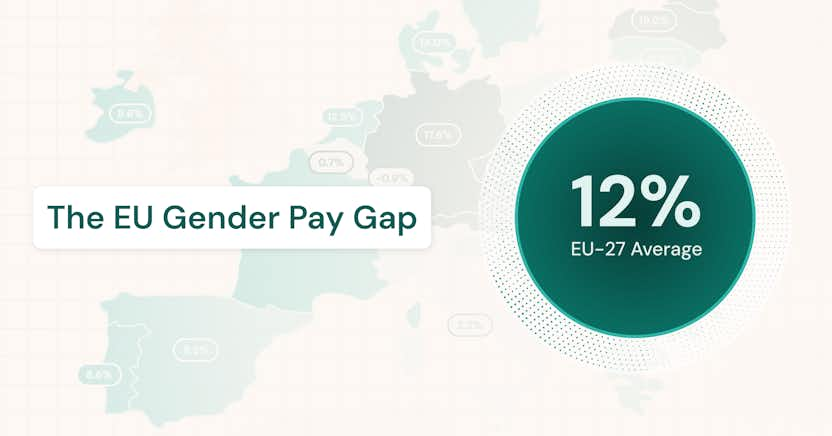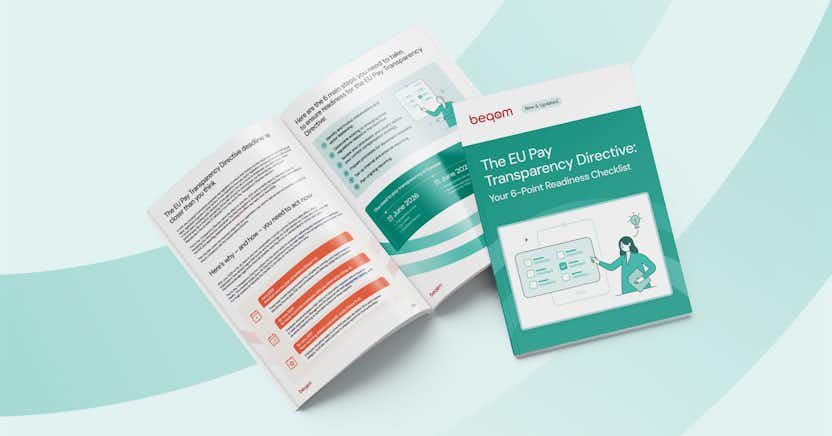The Importance of Pay Equity and How to Achieve It: A U.S. Perspective

Learn more about the following beqom products
The gender pay gap in the United States has begun to narrow since the passage of the Equal Pay Act of 1963, when women earned 59 cents for every dollar earned by men. Today, women earn 82 cents for every dollar earned by men—an improvement, yes, pay inequity persists. While the issue isn’t unique to the U.S. (the European Union has reported a somewhat narrower gender pay gap of 87%), there is clearly still more work to be done.
Pay transparency in the United States
On average, women in the U.S. continue to be paid less than men. According to a Pew Research study, the gender wage gap stood at 18% in 2020, nearly the same as in 2000. This gap varies significantly across racial and ethnic groups as well as education levels. For example, Latina and Black women experience a wider gap than their White and Asian-American female peers. Notably, the gap continues to widen for women without a college degree.
Wage gap causes are complex, and it’s important to distinguish between the uncontrolled (raw) wage gap and the controlled gap. After accounting for measurable factors like industry, role, work experience, education, and hours worked, the U.S. gender pay gap is only about one cent on the dollar. While that amount may seem small, the fact that it exists at all after eliminating other explanations suggests the presence of bias. But perhaps more importantly, it raises the question of why the uncontrolled and controlled gaps should be so different. Why the gap in gaps?
Having a small controlled gap but a large uncontrolled gap begs for deeper analysis at the societal and company levels. The discrepancy may point to deeper underlying problems. For example, if women earn less at your company because they are not in senior positions, that “explains” the pay gap, but it raises the question of whether there is equality in how women are being hired, trained, and promoted.
To address persistent inequality, more than 80% of U.S. states have enacted equal pay legislation to strengthen worker protections against discrimination. Additionally, some states now prohibit employers from asking about salary history or even mandate pay transparency measures. For example, New York requires salary ranges be disclosed in all job postings. Meanwhile, Connecticut mandates that employers provide a wage range upon employee or applicant request. Additionally, several states safeguard employees against retaliation for discussing wages.
How employers can address pay inequities
Despite these protections, beqom found that more than half of workers in the U.S. (51%) believe their workplace has a gender pay gap problem, up 121% since 2019, and more than a third (35%) say the gender pay gap has increased over the past two years. On top of that, nearly 2 in 5 (39%) employees say they are not paid fairly. It’s clear that employers need to do more to ensure they are paying their workers equitably.

Leveling the Paying Field
A Look at the Gender Pay Gap and Other Compensation Trends. We surveyed 2,000 active employees in the us and the UK on the gender pay gap, as well as total compensation, and pay transparency.
Closing the gender pay gap requires an ongoing commitment and a multifaceted approach at the organizational level. Employers should analyze their pay data regularly to uncover any unexplained gender disparities. Go beyond simply looking at job titles and make sure men and women are paid fairly for substantially similar work.
For example, a female senior marketing manager in the consumer products division of a large retailer undertakes similar activities and needs comparable skills to a male director of email marketing in the company’s technology department. Both positions require skills in campaign creation, data analysis, creative content development, and analytics. The output and impact of their work are similar. But if the man earns more for substantially equal work requiring comparable effort, skill, and responsibility, an unjustified pay gap exists.
Organizations also should implement structured pay scales, clear criteria for promotion, and standardized documentation of compensation to minimize room for bias. Performance reviews should be audited as well, to ensure gender neutrality. In order to confirm a neutral approach by the review practitioner, unconscious bias training and familiarity with equitable practices in hiring, promotion, and compensation is necessary. This training can be informed by employee feedback on workplace culture and advancement barriers specific to female employees.
Feedback and coaching are also important. There should be systems and channels by which all employees receive the feedback and guidance needed for them to succeed and advance.
Finally, employers need to be proactive and transparent about compensation ranges. Empower employees to discuss wages without retaliation and provide clear explanations around how an individual’s pay was determined.
The role of HR technology
While the intention to achieve pay equity needs to come first, willingness alone is not enough. There are data and process components to pay transparency and equity, especially in large organizations. You need to get a grip on where you stand, which you can only do through analyzing your pay data and digging out the truth, then ensuring you have systems and processes in place to support your equity strategy.
A comprehensive pay equity software should encompass advanced analytics, compliance tools, seamless integration with HRIS, and the ability to embed pay equity into compensation processes and decision-making to ensure that pay equity becomes an integral part of the organizational culture. Some key components include:
Advanced analytics. The necessary analysis requires sophisticated capabilities like AI, machine learning, and multivariate regression analysis. Advanced analytics are essential for determining the root causes of pay gaps by considering various factors simultaneously and identifying the key drivers behind disparities.
Automated processes. Automation of compensation processes is necessary to minimize manual errors and biases, ensuring that pay decisions are data-driven and align with consistent and fair criteria. Human intervention can always be allowed, but it should be in the context of hard facts.
Embedded processes. Pay equity is an ongoing process, not a one-time event. HR technology should seamlessly integrate with compensation cycles, hiring, and promotion decisions, making pay equity a native part of these processes.
Up-to-date reporting. With pay regulations in the U.S. that vary from state to state, and that are constantly changing, you need a source of continuously updated reports that comply with both current state and federal regulations.
Sustainable effort. Because managing pay equity is a continuous effort, your company needs to have the necessary in-house capabilities so that you do not have to continuously rely on outside consultants. The system should be able to be maintained by your team after some onboarding and training.
Equal pay benchmarking. The compensation technology should facilitate comparisons with industry benchmarks to ensure that pay structures remain competitive and equitable. This also requires the ability to analyze and compare jobs and employee attributes using objective criteria to determine the equivalency of different jobs.
Data privacy and security. Robust security measures must be in place to safeguard sensitive employee data, and hosting must ensure compliance with data protection regulations, especially if operating in the EU.
Pursuing pay parity requires effort. But employers have much to gain in terms of talent retention, recruitment, innovation, productivity, reputation, and staying on the right side of the law. Fair pay signifies valuing all employees and the strengths they bring, and the journey towards equality requires a commitment to transforming workplace culture.
If you want to explore the transformative potential of pay equity and uncover the many benefits it can deliver to your organization, contact us at beqom to speak with a pay equity expert.







